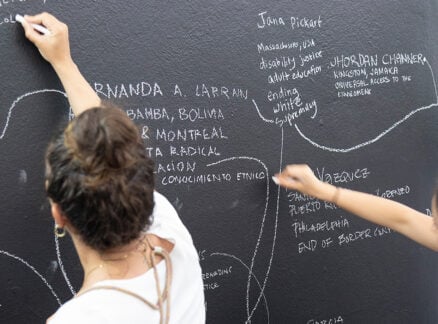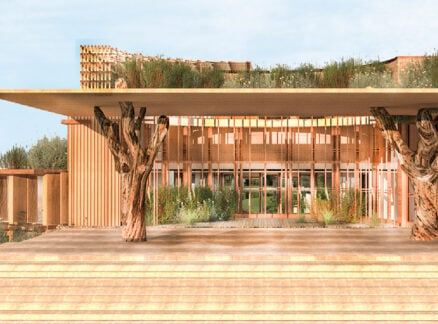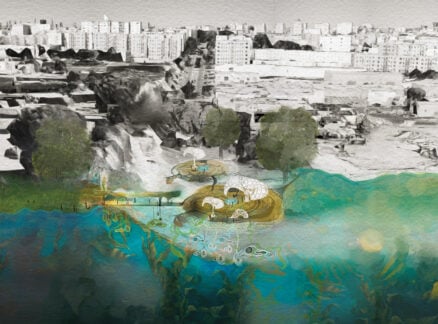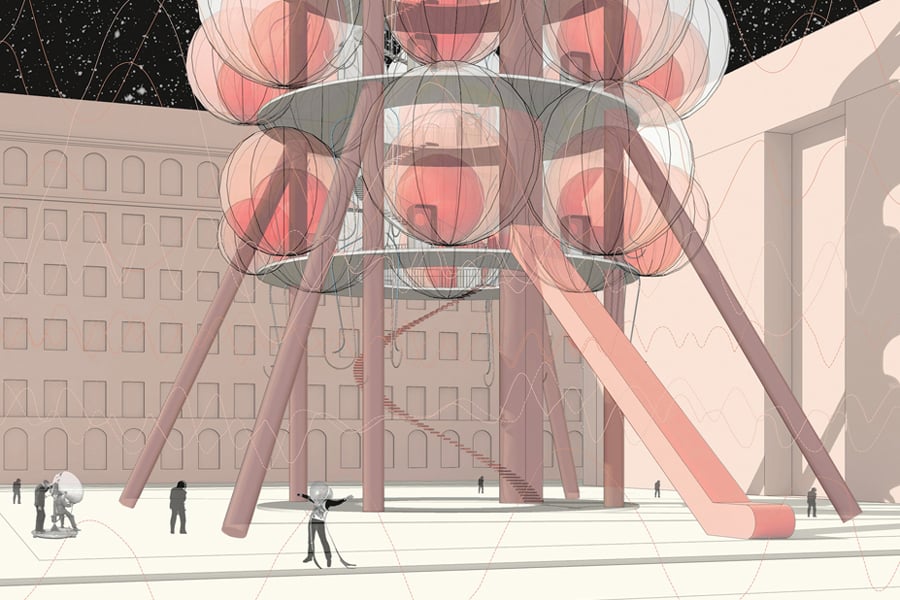
May 4, 2021
Future100: Guillermo Hevia’s Design Is an Exploration of Scale
This GSAPP student’s work grapples with our relationship to the environment and other nonhuman entities.
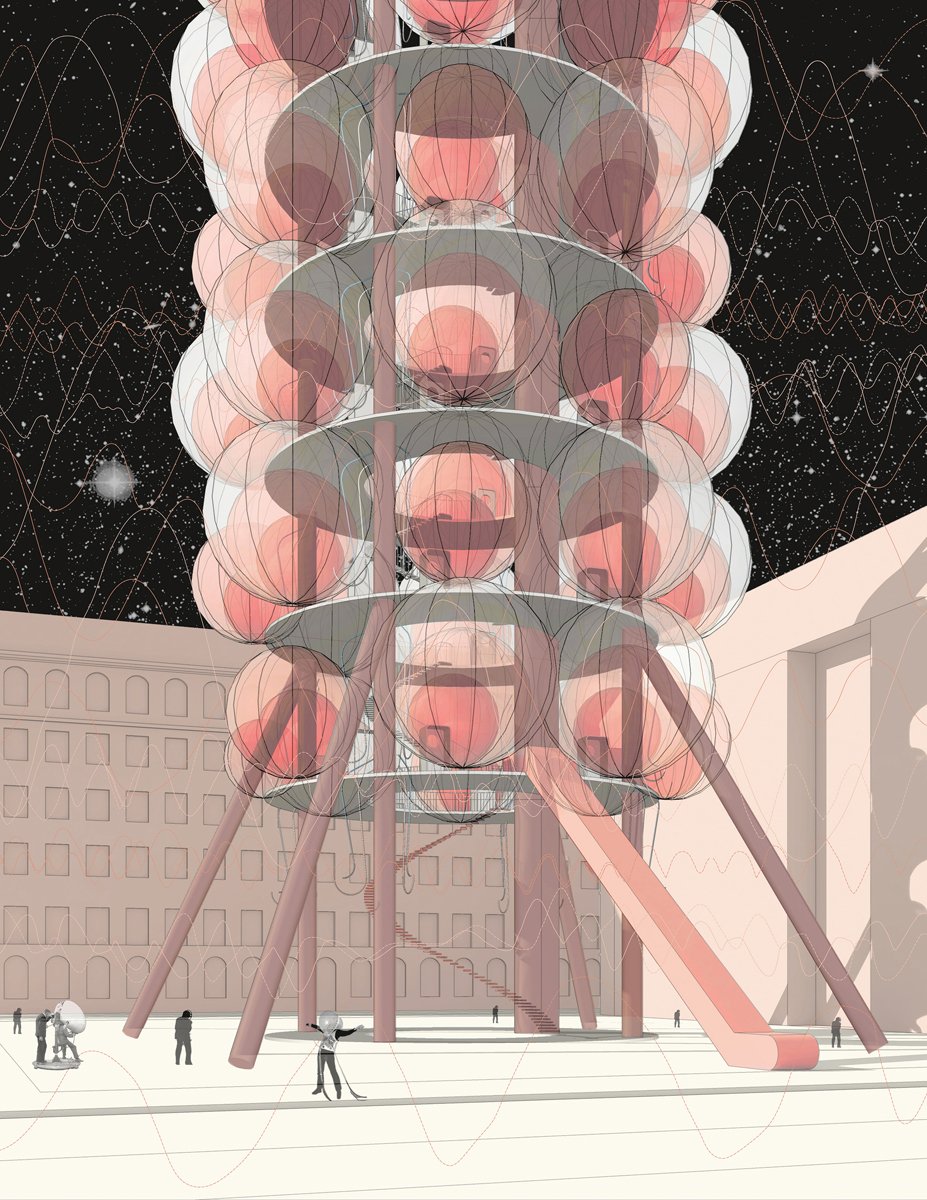
Chilean architect Guillermo Hevia practiced for seven years in his home country before enrolling at Columbia. “During my time at GSAPP, I discovered that architecture can be expanded to a broader understanding of scale,” he remarks. “I have become interested in the ‘device scale,’ which can shift our relationship with climate or the environment and can relate us to the nonhuman and the nonliving.” As an example of this approach, one part of Hevia’s Sound Strata project is a helmetlike acoustic device that maps a taxonomy of urban noise and provides the user with a different sensory experience of the city.
“I also discovered that architecture can expand to the network scale, meaning that buildings are not isolated entities,” he adds. “Architecture can be unstable, ephemeral, and performative.” The speculative Hudson River Plug-in Floating Communities project is a system of modular podlike structures that could be deployed in response to changing political, economic, natural, and societal conditions. Initially proposed as a network extending between affluent and culturally rich communities and the Hudson River shoreline, the interlinked structures could form different compositions to facilitate various living, working, and leisure programs. This project challenges the notion that architecture is static and alludes to the influence that changing cultural norms can have on the discipline. The design also explores this concept of fluidity through social programming that can expand beyond the urban context. Introduced in any context, the plug-in system would emphasize locality and the vernacular rather than impose a set agenda or aesthetic.
When considering his native South America, Hevia is wary of designs that are too sterile and unreflective of context. “I see the risk that architecture is becoming a kind of registered trademark, a prescriptive, ambiguous, diffuse, and exotic concept,” he states. The deeply critical yet pragmatic architect hopes to continue his practice postgraduation by balancing the theoretical with the feasible.
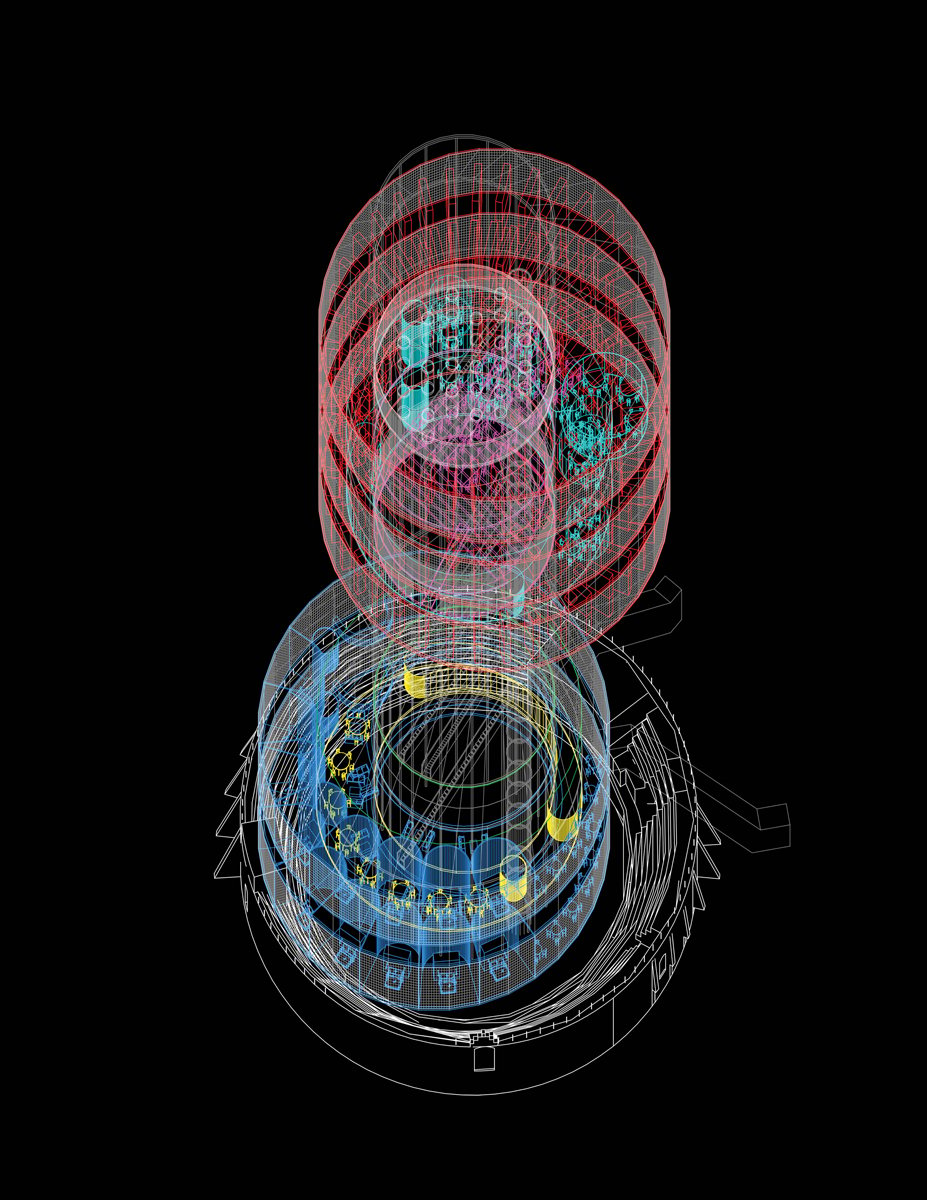
Visit metropolismag.com/future100 to see more groundbreaking student work.
GUILLERMO HEVIA
Columbia University
Graduate Architecture
NOMINATOR: Bernard Tschumi, Professor of Architecture, Dean Emeritus at Columbia University Graduate School of Architecture, Planning, and Preservation
Guillermo Hevia practiced architecture at his eponymous Chile-based firm prior to studying at Columbia, where he has continued his research into bioclimatic technologies and development.
You may also enjoy “Future100: Soundscapes Combat the ‘Tyranny of the Visual’”
Would you like to comment on this article? Send your thoughts to: [email protected]
Register here for Metropolis’s Think Tank Thursdays and hear what leading firms across North America are thinking and working on today.



